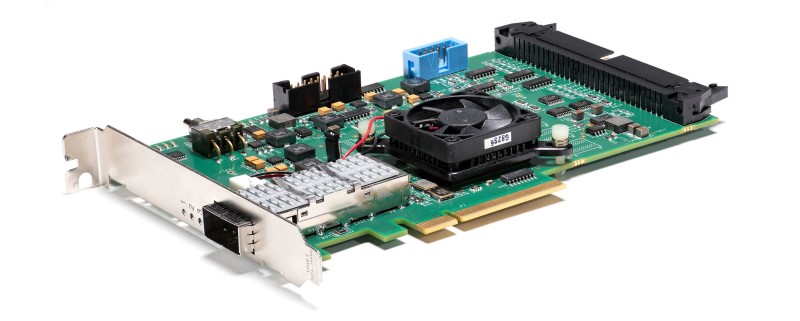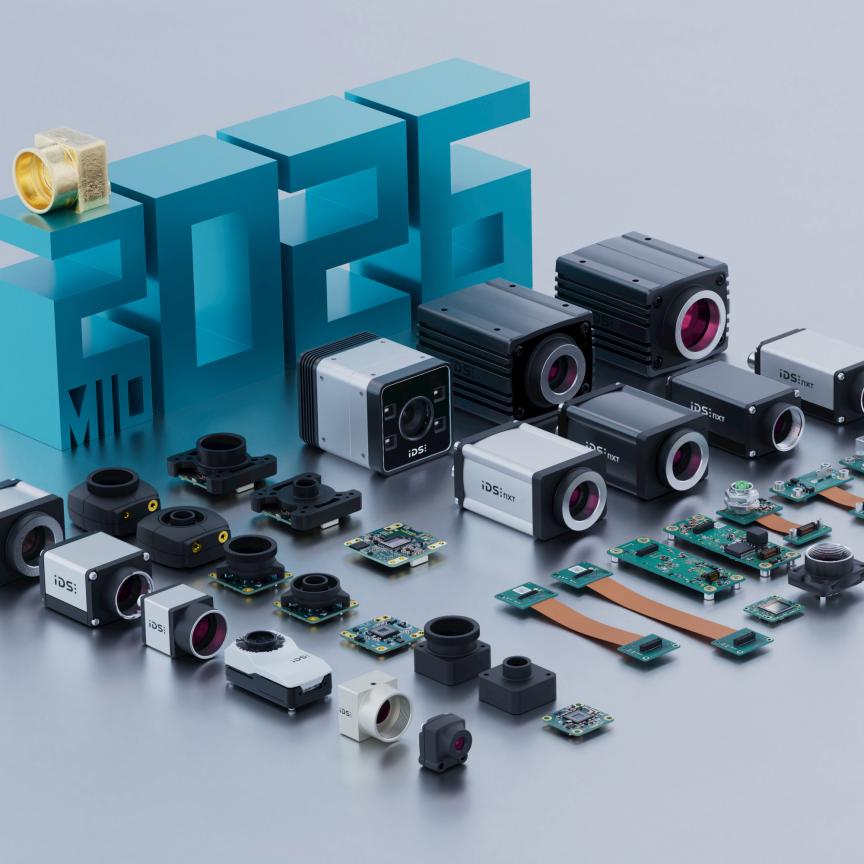Machine vision acts as the eyes of the factory, leveraging imaging technology to capture visual information for analysis and rapid decision making. The most common uses of machine vision are for the detection of defects, sorting objects, the positioning and measuring of parts, and the guidance of automation robots for production control.
Along with relieving humans of the responsibility of manually inspecting products, machine vision has a growing number of other uses including transportation, self-driving cars, research science, and in warehouses where cameras are used to check stock and automatically order replenishment when necessary. The innovations listed in this article will benefit those use cases, and many more, just as they will the traditional industrial applications machine vision serves.

The CoaXPress over Fiber protocol is an add-on to the CoaXPress 2.0 specification that enables camera data to be transmitted over fiber optic cable. The BitFlow Claxon Fiber is a PCIe Gen3 x8 board configured with a single port for QSFP+ hot-swappable, parallel fiber-optical/copper transceiver modules.
Today, the market for machine vision worldwide is over $14 billion (USD). Annual growth is pegged at approximately eight percent for machine vision cameras, lens, frame grabbers, processors, and software with no signs of slowing.
BitFlow, a manufacturer of frame grabbers, predicts the following developments will help shape machine vision in 2023, and in turn open exciting new opportunities for systems integrators and for the manufacturers who deploy machine vision on their plant floors.
1. Continued Growth
The Covid-19 pandemic rapidly increased the adoption of machine vision technology across a wide swath of industries, a trend that has been accelerated by companies relying on automation to address continuing labor shortages. This pace is expected to continue in 2023 due to many factors including global supply chain issues that hamper production schedules. Manufacturers impacted by supply shortages are replacing off-shore suppliers with in-house production of components that require new visual inspection systems.
2. More advanced sensors
New imaging sensors are enabling machine vision systems to identify defects in smaller, more complex parts with extremely tight tolerances. Sensor advancements are emerging in the areas of multispectral, UV, SWIR and hyperspectral designs. Ultimately, more powerful sensors will generate demand for higher performance components to support them, such as lighting systems and frame grabbers, which in turn will push the capabilities of machine vision applications to new heights.
3. CoaXPress over fibre
The updated CoaXPress 2.0 interface enables support for faster, more reliable data transfer between high-resolution cameras and host PCs. Delivering transfers speeds up to 12.5Gbps, CoaXPress 2.0 is elevating machine vision applications, while reducing system complexity and costs. The next step for CoaXPress is applying the benefits of fiber optic cabling as an alternative to coaxial cable. As an extension of the CoaXPress 2.0 protocol, CoaXPress over Fiber (CXPoF) provides the generic GeniCam programming interface for hardware and software, plus is independent of any operating system, making it simple to upgrade from coaxial to fiber optics.
4. Deep learning
By mimicking how the human brain processes visual input, deep learning brings machine vision into industrial applications where highly subjective decisions need to be made, for instance, where there is subtle variability in an image such as the presence of dust, or when distinguishing between very similar objects. Plus, like the brain, it "learns" or self-trains itself from continual analysis of data that create models of what good and bad parts look like. Convolutional neural networks (CNN) process massive datasets, specifically through the use of complex algorithms rather than exclusively rules-based static algorithms. Deep learning represents an alternative to traditional machine vision, and while it is deployed in few applications today, it has the potential to deliver tremendous business value.
5. Cloud computing
Machine vision requires high-speed, real-time processing with low latency. At this stage it is hard to achieve this with cloud computing, so edge computing is typically used to shorten the distance between collected data and processing. However, this is set to change. Although still in the experimental stages, companies using machine vision are beginning to turn to the power of cloud computing to handle the flow of the massive amounts of image data they systems generate. Improved upload speeds are making cloud computing a practical decision for storage and sharing data, and possibly soon, 3D analysis, deep learning and AI.

